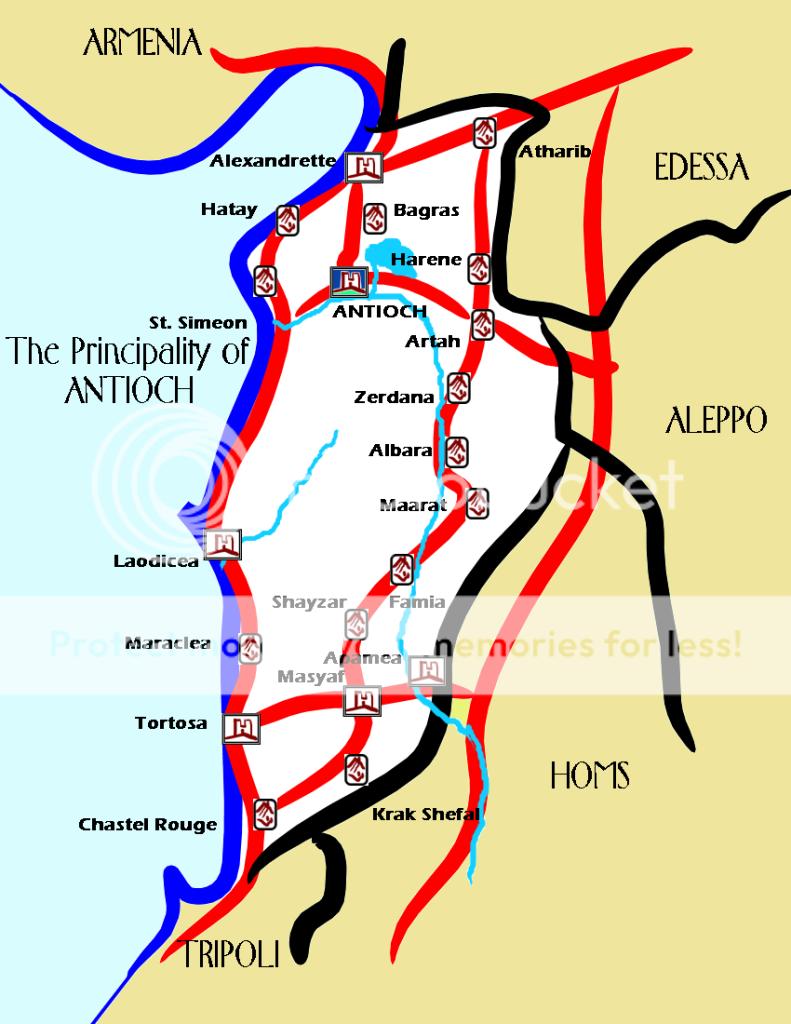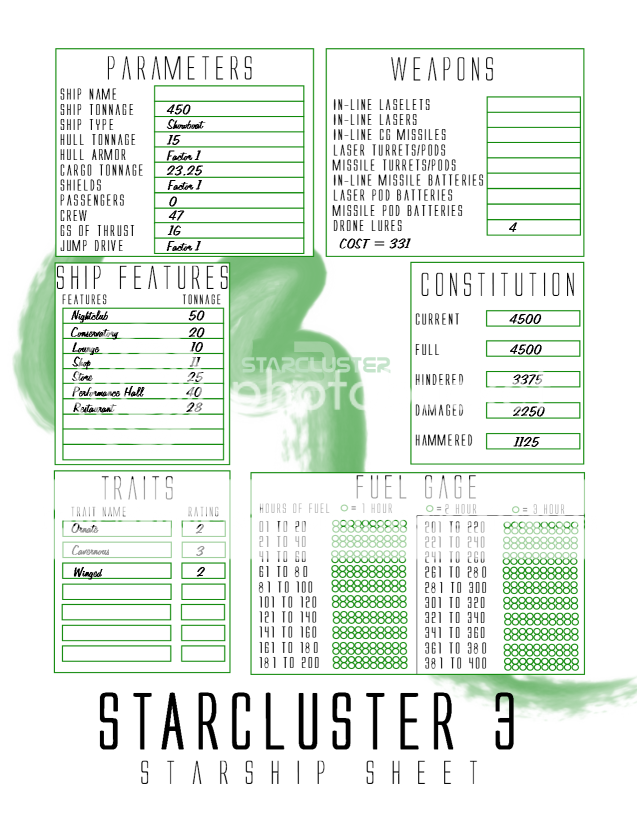
The Principality of Antioch is the crossroads of Northern Outremer. The Orontes River, which rises almost at the borders of Damascus in Homs, sweeps up from the south in a great hook past the city of Antioch, and on to the Mediterranean near St. Simeon. The great valley of the Orontes is a principal pathway between the coast and the interior, and the broad fertile valley feeds all of the Principality.
The coast, though, is where some great cities lie. The huge ports of Alexandrette, Laodicea, and Tortosa together balance the inland cities of Antioch, Apamea and Masyaf in the Orontes valley. Alexandrette is the greatest of these, and the port for Antioch. From Alexandrette, roads run to Armenia through Issus, through Atharib into Edessa, and through Artah into the great metropolis of Aleppo as well as to Antioch.
Tortosa in the south was once held by the Templars, but they sold it to complete their aquisition of Jaffa and the fortified towns nearby. As a consequence, it is well fortified, and able to be supplied by sea. Over the mountains from Tortosa is Masyaf, the old capital of the Assassins, given up when they moved into Homs upon Saladin's death. It is overlooked by a great castle as well. Two castles defend the great port of Laodicea. Founded by Seleucis I after the death of Alexander, the port flourished under the Greeks and Romans before falling to the Muslims. It was taken by Saladin briefly, but was quickly retaken by Richard I in the Third Crusade.
The principal agricultural product of the Principality is wheat, with fruit and vegetables also important. Unlike most of the region, rainfall supports fairly intensive cultivation without much irrigation. The Orontes is used for its valley, not its water, and is not navigable. The roads paralleling the river carry a huge amount of traffic. The caravan tolls for these roads and the harbor tariffs from the ports are rich plums for the state.
Antioch the city is situated where the Lake of Antioch empties into the Orontes. Like Laodicea and Apamea, it dates back to Hellenistic days, and retains much of that flavor. As the hub of trade in the area, it is a rich city, and the long line of Princes of Antioch have greatly beautified the city.
The Principality is generally rather hostile with Aleppo and Edessa, and favorable with Homs, it's major trading partner. Relations with the County of Tripoli have seesawed from hostility to friendship over the years, depending much upon the personal relations of the Prince and Count.
-clash
